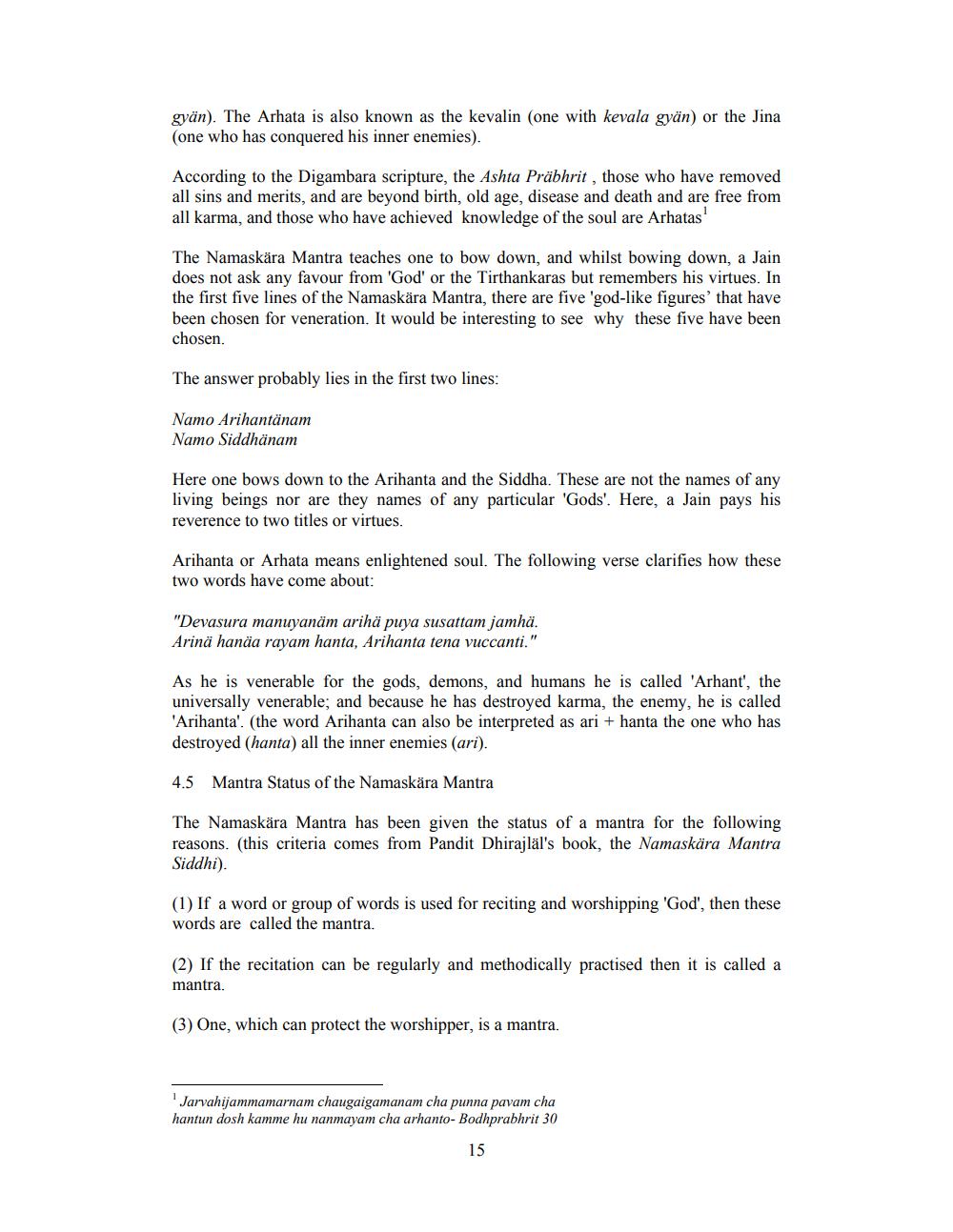________________
gän). The Arhata is also known as the kevalin (one with kevala gyän) or the Jina (one who has conquered his inner enemies).
According to the Digambara scripture, the Ashta Präbhrit, those who have removed all sins and merits, and are beyond birth, old age, disease and death and are free from all karma, and those who have achieved knowledge of the soul are Arhatas
The Namaskära Mantra teaches one to bow down, and whilst bowing down, a Jain does not ask any favour from 'God' or the Tirthankaras but remembers his virtues. In the first five lines of the Namaskära Mantra, there are five 'god-like figures that have been chosen for veneration. It would be interesting to see why these five have been chosen.
The answer probably lies in the first two lines:
Namo Arihantänam Namo Siddhanam
Here one bows down to the Arihanta and the Siddha. These are not the names of any living beings nor are they names of any particular 'Gods'. Here, a Jain pays his reverence to two titles or virtues.
Arihanta or Arhata means enlightened soul. The following verse clarifies how these two words have come about:
"Devasura manuyanām arihä puya susattam jamhä. Arinä hanäa rayam hanta, Arihanta tena vuccanti."
As he is venerable for the gods, demons, and humans he is called 'Arhant', the universally venerable, and because he has destroyed karma, the enemy, he is called 'Arihanta'. (the word Arihanta can also be interpreted as ari + hanta the one who has destroyed (hanta) all the inner enemies (ari).
4.5 Mantra Status of the Namaskära Mantra
given the status of a manet Namaskära Mantra
The Namaskära Mantra has been given the status of a mantra for the following reasons. (this criteria comes from Pandit Dhirajlal's book, the Namaskära Mantra Siddhi).
(1) If a word or group of words is used for reciting and worshipping 'God', then these words are called the mantra.
(2) If the recitation can be regularly and methodically practised then it is called a mantra.
(3) One, which can protect the worshipper, is a mantra.
Jarvahijammamarnam chaugaigamanam cha punna pavam cha hantun dosh kamme hu nanmayam cha arhanto- Bodhprabhrit 30
15




